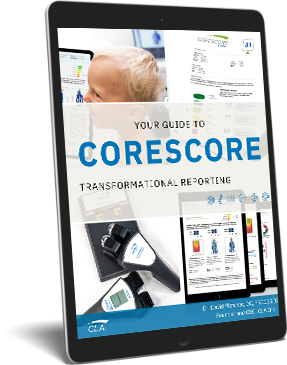By Dr. Christopher Kent
The body of evidence supporting the intimate, two-way communication system between the nervous system and the immune system is growing.
In a recent review by Haas and Schauenstein [1] the authors stated, “The discipline of ‘psychoneuroimmunology’ or ‘neuroimmunomodulation’, owes its rise to modern molecular biologic techniques, by which it could be unequivocally proven that the communicative organs, i.e. the brain, endocrine system, and immune system are speaking a common language by sharing common signal mediators and receptors.”
Investigators have demonstrated that the sympathetic nervous system conveys information from the central nervous system to the peripheral immune system. It does so via catecholamines, which are chemicals that exert effects resembling those of impulses transmitted by the adrenergic, postganglionic fibers of the sympathetic nervous system. [2,3,4,5] Furthermore, other neurotransmitters, including acetylcholine, serotonin, certain amino acids, and opioids mediate neuroimmune communications. [6,7,8,9]
Haas and Schauenstein [1] described “a complete feedback circuit between the brain and immune system that is secured by several mechanisms: the development and functions of the immune system are regulated by endocrine and neuroendocrine mediators, and cytokines released from activated immune cells in turn modulate functions in the CNS. Defects at any point of this network are expected to affect all of the systems involved.
“The optimal functioning of the immune defense is critically dependent on the homeostasis of the neuroendorine and/or central nervous systems. Loss of this homeostasis can lead to immune defects, as has been shown for chronic stress or depressive disorders, or it can significantly contribute to the occurrence of pathogenic immune reactions, such as allergy and autoimmune disease.”
From a chiropractic perspective, these findings are exciting. Insight into the complex neurochemical “dance” between the nervous system and immune system expands our physiological understanding of the “mental impulse.” It is clear that the message propagated through the nervous system is not limited to synaptic transmission of action potentials.
Animal research has also demonstrated that structures within the intervertebral motion segment are innervated by sympathetic sensory fibers. Such structures include the facets joints, the dura mater, the posterior longitudinal ligament, and intervertebral discs. [10,11,12,13]
Altered biomechanics, associated with vertebral subluxation, may interfere with the sensory input forming the body’s “neural image” of the self, and the relationship of self to the environment. The resulting disruption of immune function may alter the response of the individual to infectious agents, or result in autoimmune reactions.
This is an area of research, which is immensely rich in clinical promise. From a clinical standpoint, objective evaluation of autonomic activity should be considered by the subluxation-based chiropractor. Such assessments will allow better understanding of the relationship between vertebral subluxation and autonomic dysfunction, in the individual patient.
Skin temperature instrumentation provides a snapshot of the neurochemical “dance” mediated through the sympathetic nervous system. It is a glimpse at how big the chiropractic idea is. By providing a higher level of technical service, the 21st century chiropractor stands ready to deliver on the promise.
References
1. Haas HS, Schauenstein K: “Immunity, hormones, and the brain.” Allergy 2001;56:470.
2. Friedman EM, Irwin MR: “Modulation of immune cell function by the autonomic nervous system.” Pharmacol Ther 1997;74:27.
3. Rinner I, Felsner P, Liebmann P, et al: “Andrenergic/cholinergic immunomodulation in the rat model-in vivo veritas?” Dev Immunol 1998;6:245.
4. Schorr EC, Arnason BG: “Interactions between the sympathetic system and the immune system.” Behav Immun 1999;13:271.
5. Basu S, Dasgupta PS: “Dopamine, a neurotransmitter, influences the immune system.” J Neuroimmunol 2000;102:113.
6. Mossner R, Lesch KP: “Role of serotonin in the immune system and in neuroimmune interactions.” Brain Behav Immun 1998;12:249.
7. Roy S, Loh HH: “Effects of opioids on the immune system.” Neurochem Res 1996;21:1375.
8. Rinner I, Schalenstein K: “The parasympathetic nervous system takes part in the immuno-neuroendocrine dialogue.” J Neuroimmunol 1991;34:165.
9. Hegg CC, Thayer SA: “Monocytic cells secrete factors that evoke excitatory synaptic activity in rat hippocampal cultures.” Eur J Pharmacol 1999;385:231.
10. Imai S, Hukuda S, Maeda T: “Dually innervating nociceptive networks in the rat lumbar posterior longitudinal ligaments.” Spine 1995;220:2086.
11. Kimmel DL: “Innervation of the spinal dura mater and dura mater of the posterior cranial fossa.” Neurology 1961;11:800.
12. Ohtori S, Takahashi K, Chiba T, et al: “Sensory innervation of the dorsal portion of the lumbar intervertebral discs in rats.” Spine 2001;26:946.
13. Suseki K, Takahashi Y, Takahashi K, et al: “Innervation of the lumbar facet joints.” Spine 1997;22:477.




























































